Template loop detected: Template:HFLS H2Z Hangzhou<!DOCTYPE html>
Background
Overview
On April 20th, the 12th International Conference on Gastric Cancer was held in Beijing, China. The experts at the conference disclosed the number of newly discovered cases of gastric cancer in China in 2017—680,000, which accounted for 50% globally.
Background Information
Suan Jianbing, a kind of fermented pancake, is a staple food in Shandong Province, China. Recent research has reported that this dietary habit will probably increase the risk of gastric cancer, and the carcinogenic rate is 260% higher than people with a normal diet. This appalling number is largely due to nitrite, which is generated in the fermentation process.It is not the only case in Chinese cuisine. Salted Pork is a popular food in Zhuanghe, Liaoning Province, where residents like to add it to most of the dishes. All the families prepare home-made salted pork at the beginning of every winter. They put the pork in a large jar, spread a layer of large grain salt on it, and then preserve it for a whole year. During the process, a large amount of nitrite is formed, which may induce cell concretization after the chemical reactions with bacteria and increase the risk of gastric cancer.
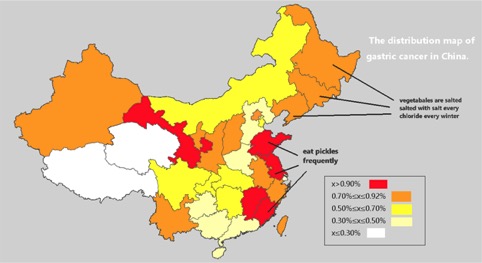
Fig 1. Gastric Cancer in China
Another example is found in Changle, a coastal city with high incidence of gastric cancer. The investigation has found out that most gastric cancer patients have shrimp oil and cured fish in their diet. Some even use shrimp oil to cook three meals every day.
These cases reveal the danger of nitrite. Yet the nitrite itself is highly toxic. Nitrite reacts with amines and amino acids to produce N-nitrosamines that are carcinogenic, mutagenic and teratogenic. These compounds are formed by the reaction of secondary amines with nitrosating agents, such as nitrates or nitrites.[1] A number of investigations conducted by research centers and food safety institutes have shown that many food products are contaminated with nitroso compounds during production process. These compounds are formed in a slightly acidic environment, which is caused by the reaction of sodium nitrite and nitrogen oxide with proteins, amino acids and amines in food.[2] The main precursors of N-nitrosamines are believed to be formed by reaction of nitrogen oxides.
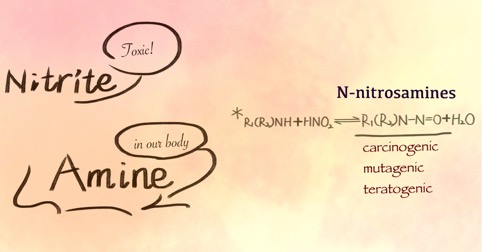
Fig 2. The Carcinogenic Pathway of nitrite ion in human body
The International Agency for Research on Cancer (IARC) classified N-nitrosodimethylamine (NDMA) and N-nitrosodiethylamine (NDEA) as most carcinogenic to humans, and N-nitrosodi-n-butylamine (NDBA), N-ntrosopiperidine (NPIP) and N-nitrosopyrrolidine (NPYR) as possibly carcinogenic to humans [3] The Process of Producing Pickled Vegetables.
In the traditional pickle industry, nearly all kinds of the vegetables can be pickled. Recent research has shown that all the plants tend to concentrate nitrate during their vegetation process, with the microbes and the nitrate reductases, which would convert nitrate into nitrite in the pickling process. After being ingested by our digestive systems, nitrite would be combined with the amine in our bodies, producing of nitrosamines. (Recently, Medical studies indicated that the nitrosamine is a strong carcinogen). Moreover, nitrite is one of the causes of methemoglobinemia which brings to the problem of having tissue hypoxia and also causes vasodilation and lower blood pressure.
The Nitrite
As we have seen the dangers of nitrite bring to human beings, therefore our team decided working towards our goal of investigating the negative effects of the picking process.Through literature, we found out that the concentration of nitrite was generally higher in the pickled products. In order to obtain the actual data, we decided to have a field survey. Therefore, we contacted with the Zhejiang Qiumei Food CO, LTD(see our integrated human practices part)
Zhejiang Qiumei Food CO, LTD
| The leading enterprise of Zhejiang province. | |
| Its pickle products once won the prize of "the best agricultural products", rewarded by the Department of Agriculture(Zhejiang). |
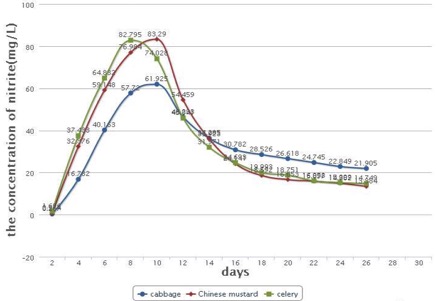
Fig 3. The change of nitrite contents in various pickle food
We were invited to the headquarters of Zhejiang Qiumei Food CO, LTD, visiting the integrated producing shop. Up there, we acquired the information of pickle's productive process.
After understanding the principle of pickle's production, we successfully found out the main reasons that influence the generation of the nitrite during the pickling process. The main ideas of our findings from the notes taken from the manufacturing plant visit and the data of pickle's mother liquid are summarized below:
| The plants require nitrogen in order to produce proteins— the sole source of nitrogen of the plants is the mineral N in soil, which is known as the nitrate, which would be converted into nitrite by the nitrate reductases in the microbes. | |
|
The concentration of nitrite in the fermentation liquid has shown a drastic changing curve through the course of months. (According to the Chinese standard, pickles' concentration of the nitrite cannot exceed 20 mg/L) |
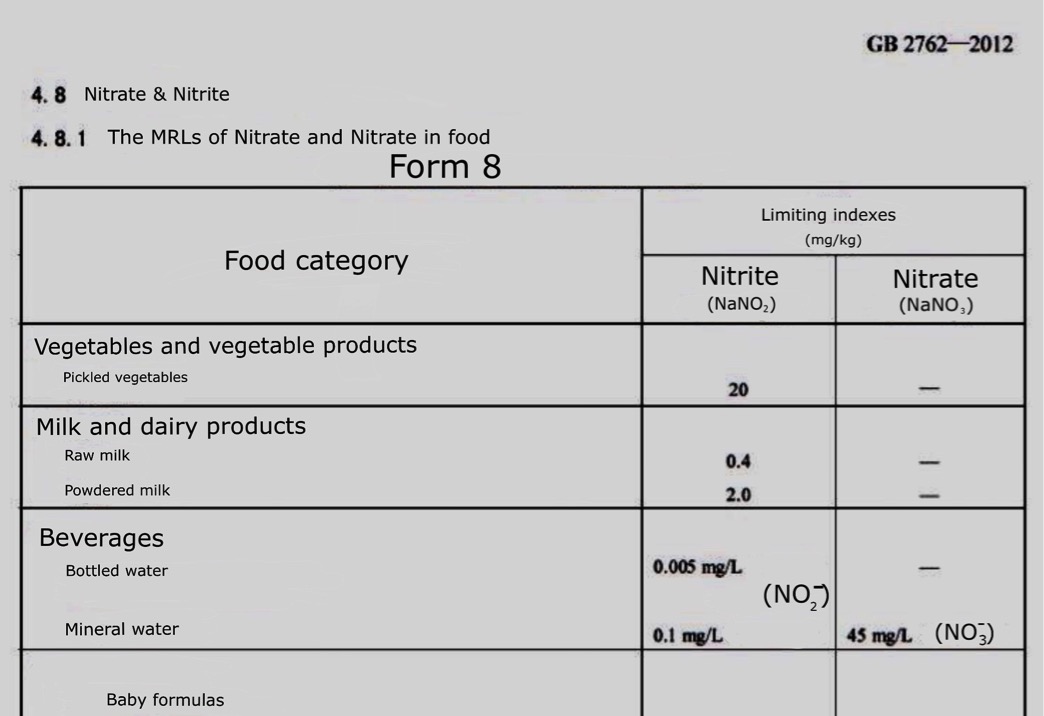
Fig 4. ChineseFDA's standard for nitrite/nitrate in food
Former Solution
As aforementioned, the pickled factory currently uses ascorbic acid to manage the nitrite problem. However, this solution may still have some defects.| The ascorbic acid is commonly used as a reducing agent in food production, which is able to reduce the toxic nitrite and convert it to the nontoxic nitrate. The plant has to gain the food grade Vitamin C at regular intervals. The price of ascorbic acid is not inexpensive; therefore, it would raise the cost of pickle's production in some ways. | |
| In the actual operation, it is quite difficult to measure the precise concentration of nitrite. As a result, the added quantity of Vitamin C is hard to control. |
Our Solution
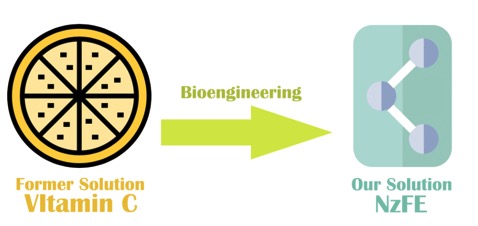 See our results of (fusion enzyme). We also did a (business study) concerning the possible market for our product.
See our results of (fusion enzyme). We also did a (business study) concerning the possible market for our product.
Reference
1 |
N.Campillo, P.Viñas, N.C.Martinez and M.H. Cordoba, “Determination of Volatile Nitrosamines in Meat Products by Microwave Assisted Extraction and Dispersive Liquid Micro Extraction Coupled to Gas Chromatography Mass Spectrometry”, Journal of Chromatography A, Vol. 1218, No. 14, 2011, pp. 1815—1821. |
2 |
K. O. Honikel, “The Use and Control of Nitrate and Nitrite for the Processing of Meat Products”, Meat Science, Vol. 78, No. 1—2, 2008, pp. 68—76. |
3 |
R. A. Scanlan, “Encyclopedia of Food and Nutrition”, Elsevier, Amsterdam, 2003, pp. 4142—4147. |
4 |
Petersen, A.; Stoltze, S.Nitrate and nitrite in vegetables on the Danish market: content and intake.Food additives and contaminants : Analysis, surveillance, evaluation Control. July 1999. 16(7) p. 291-299. |

